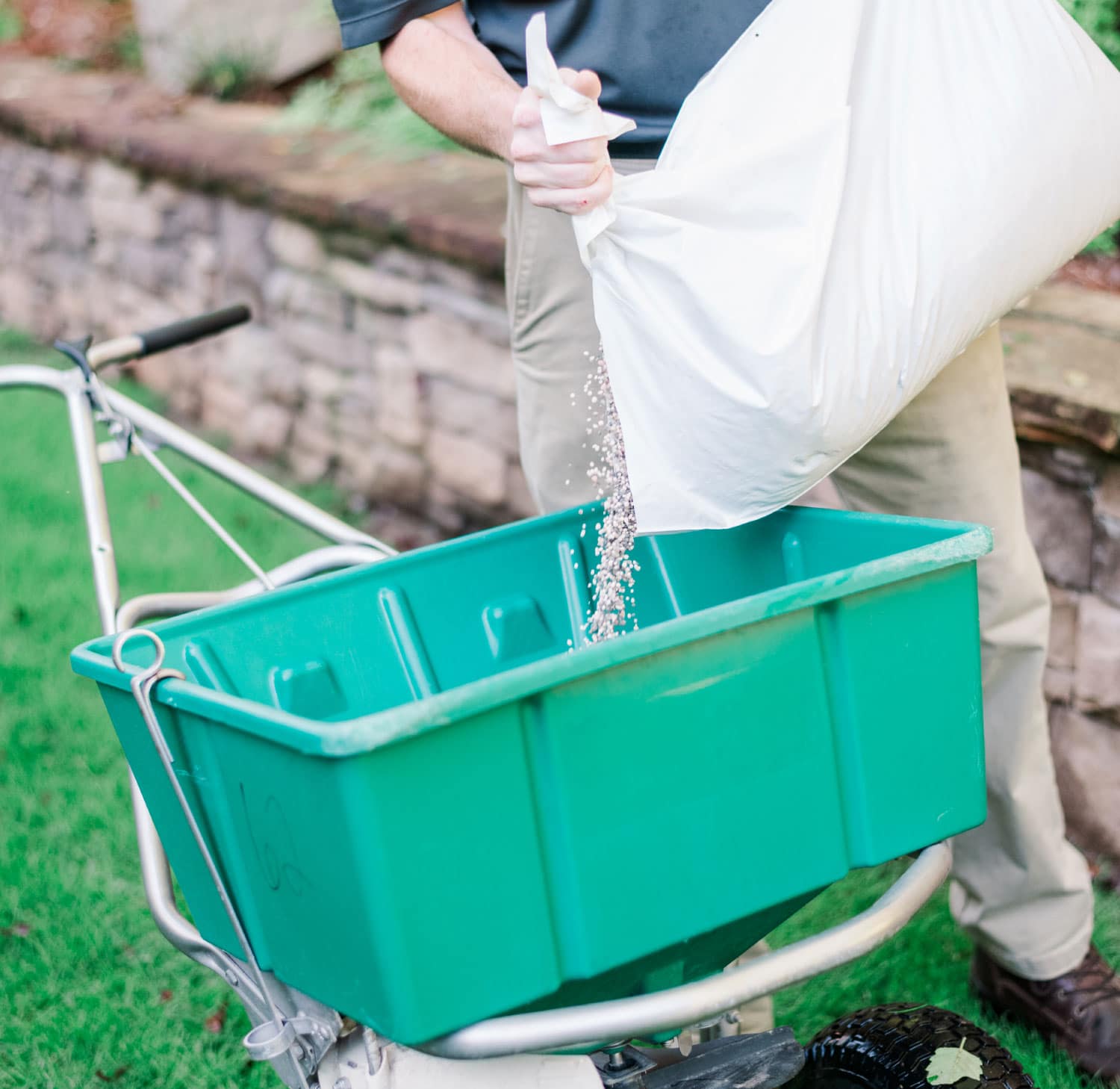Having new sod installed can be an equally exciting and daunting endeavor. As a large commitment of both time and money, the desire for success is understandable. You’ve taken a huge step toward the lawn you’ve always wanted, and now it’s time to get treatment to ensure it’s as healthy and weed free as possible. There is a period of time, however, where new sod can’t be treated with weed control products, and that is dependent on when the sod is installed.
Wait for Root Formation before Treating New Sod
Pre-emergent weed control products stunt plant growth. Most commonly, they inhibit root formation, which is fundamental to sod establishment. Sod, from top to bottom, is mature turfgrass shoots and leaves, a thin layer of thatch, soil, and roots. If the site is prepped well, sod pieces are installed in a timely manner and are well-cared for. Installing sod is the quickest way to renovate a yard. As an aside, it’s also the most practical way to establish hybrid varieties of bermuda and zoysia that don’t produce viable seed.
When installed, the most important establishment step is getting the roots in the sod to grow into the soil beneath it. All of the most commonly used pre-emergent weed control products stop root formation as seeds germinate. Established lawns have well-founded root systems, and our warm season turfs have energy stores in thick roots called rhizomes. They can tolerate these applications because their root mass is already established.
If applied too early, pre-emergents can slow or stop sod from sending roots to the soil beneath it, meaning they’re reliant only on the roots they came with. The results can be issues such as rapid drying, nutritional deficiencies, poor vigor, and greatly reduced hardiness in environmental conditions. Eventually, performance may range from underwhelming to death.
What’s Time Got to Do, Got to Do with It?
The season and timing of sod installation changes when root establishment may occur and when weed control can commence.
Spring Planting: Stop pre-emergents, mow regularly, treat after establishment.
New sod installation is common in the spring or early summer. In preparation, it’s advisable to stop pre-emergent treatments as part of site preparation. Summer weeds are to be expected. Fortunately, spring is heading directly into the time of year when our bermuda and zoysia grasses grow most vigorously. Regular mowing encourages turf density and suppresses weed seeding. After establishment, treating weeds with selective post-emergent products and preparing for fall pre-emergents are the goal.
Summer Planting: Prepare site, irrigate well, treat after establishment.
Site preparation is key, especially if pre-emergent weed control was applied in the spring. By tilling the site, the pre-emergent barrier is broken up. Treatment with an activated charcoal may also be ideal to reduce the efficacy of the pre-emergents. This is all in an attempt to establish root mass as quickly as possible, increasing the chance of survival in the summer heat. While sod installation requires increased irrigation any time of year, summertime requires maximal, deep irrigation inputs to reduce the incidence of drying out and optimizes conditions for roots to grow down into the landscape. Since the pre-emergent barrier has been broken and deactivated, weeds can be expected, but mowing regularly and applying post-emergent treatments once the sod is established will help to control existing weeds until we can treat with pre-emergents. If planted early enough in the summer, and established well enough, fall pre-emergents can be applied to suppress winter weeds.
Fall or Winter Planting: Avoid pre-emergence in the fall and following spring, mow properly, and irrigate appropriately.
This can be the most tricky time to establish bermuda or zoysia sod. Short days trigger these turfs to grow slowly and start storing energy in preparation for dormancy. Cool temperatures also make them move very slowly, meaning establishment can be prolonged exceptionally. Consistent with other planting times, avoiding pre-emergent applications is advised in preparation, but since establishment can be long and unpredictable, it’s often advantageous to avoid pre-emergent application in the spring, too. This means both winter and summer weeds are possible. Here are tips to reduce the visual impact until pre-emergents can be applied again:
- carefully mow winter weeds with a walk mower to suppress seeds
- mow the summer weeds regularly
- treat once established
- pay close attention to water. This is important for sod installed in cool weather. The cool temperatures can sometimes provide comfort, but long periods of dry weather in the winter can sometimes desiccate sod and create unintentional injury.
When Will I Know My Sod Is Ready to Be Treated?
By having Nature’s Turf, or your trusted lawn care company on your team, the guesswork is taken out of this timeline for you. Abundant but appropriate caution is required. Nobody likes weeds less than your lawn care company, but protecting your investment and establishing turf health is fundamental to your yard’s long-term success. The technician on your property should be checking the sod for establishment by pulling on the pieces. If it lifts, the sod isn’t ready. If it resists, it may be tacked and ready for treatment.
Important Takeaways:
- New sod is both exciting and scary. New sod is a large investment of time and resources, and a desire for turf health and low weed presence is understandable.
- The most important establishment task for new sod is root formation in the soil beneath it. Since most pre-emergent weed control products stop root formation, avoiding treatment during the establishment period is key.
- Timing for sod installation changes the root establishment period, directly affecting how weed control must be approached. Each installation season presents its own set of challenges, and consideration is important in both site preparation and weed control.
- Teaming up with Nature’s Turf or your trusted lawn care company takes the guesswork out. Nobody dislikes weeds more than a lawn care company, but the health of your turf is fundamental to long-term success.








